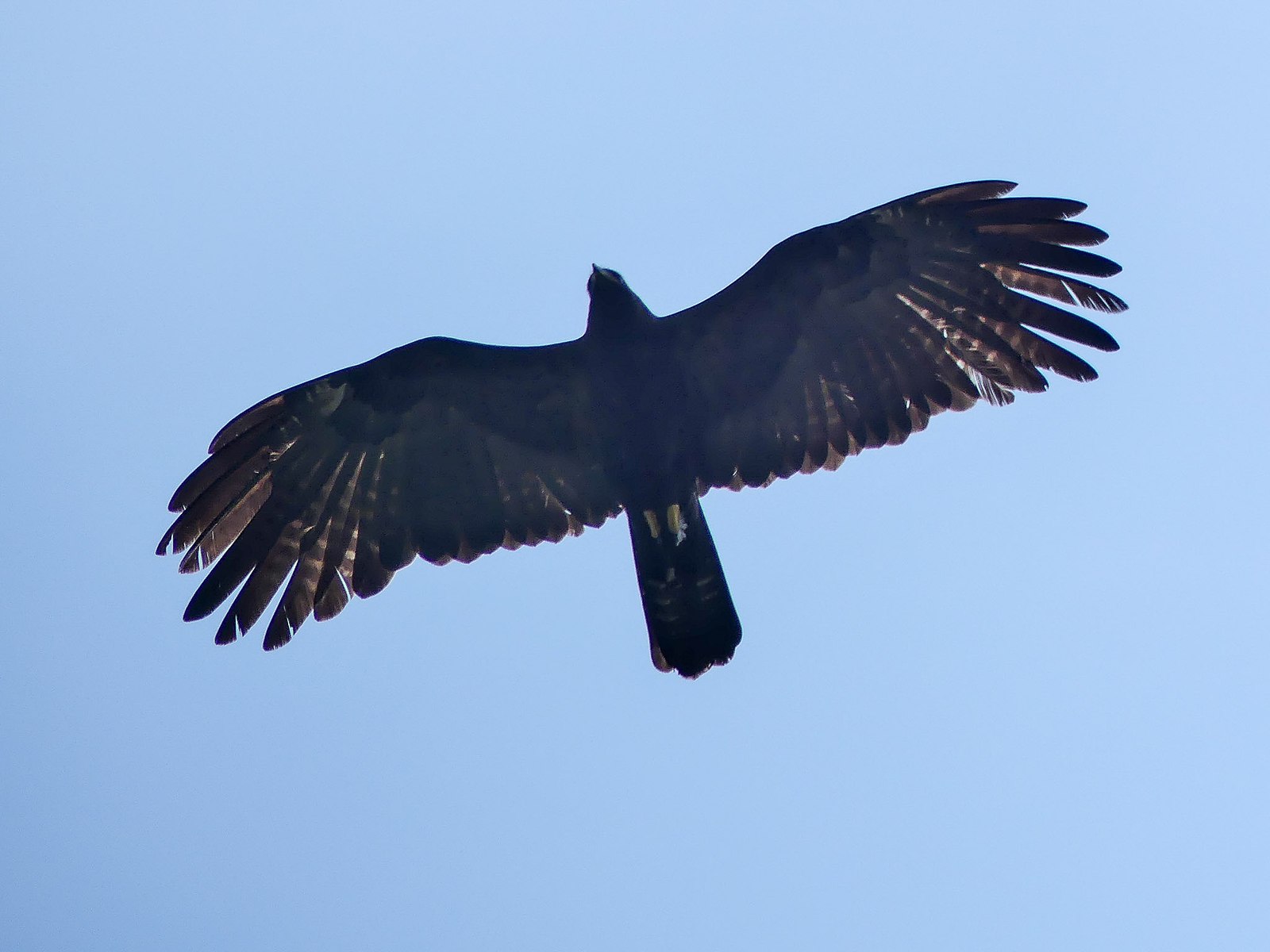Black eagles, also known as Ictinaetus malaiensis, are large birds of prey found in tropical and subtropical Asia. These magnificent birds are known for their all-black plumage, yellow bill base (cere) and feet, and distinctive wing shape. Understanding the lifespan of black eagles is crucial for their conservation and understanding their role in the ecosystem.
The Lifespan of Black Eagles
Black eagles can live up to 15 to 20 years in the wild, with the oldest recorded bird reaching an impressive 29 years of age. However, it is likely that these birds can live well into their 30s and beyond, as longevity records are often biased due to the challenges of tracking and monitoring these elusive creatures.
Factors Affecting Black Eagle Lifespan
 Image source: Black Eagle by Mike Prince
Image source: Black Eagle by Mike Prince
Several factors can influence the lifespan of black eagles, including:
-
Habitat and Environment: Black eagles thrive in forested, mountainous regions with good forest cover. Deforestation and habitat loss can negatively impact their lifespan by reducing the availability of suitable nesting sites and prey.
-
Predation and Threats: Black eagles face various threats, including predation by larger predators, such as leopards and tigers, as well as human-related threats like hunting and poaching.
-
Breeding and Reproduction: Black eagles are monogamous and form pairs. The breeding season, which typically occurs between January and April, can be a critical time for these birds, as they must successfully raise their young to ensure the continuation of their species.
-
Banding and Monitoring: Longevity records for black eagles are often biased due to the challenges of tracking and monitoring these birds in the wild. Banded birds may provide more accurate lifespan data, but the sample size is often limited.
Behavior and Ecology of Black Eagles
Black eagles are known for their unique hunting and nesting behaviors. They spend their time soaring over forests, scouring the treetops for nests to raid. Their curved claws and wide gape allow them to pick up eggs and nestlings from other birds’ nests, as well as swiftlets from caves.
Black eagles are also known for their spectacular courtship displays, which involve steep dives with folded wings and swoops up in a U-shape into a vertical stall.
Conservation Status and Population Trends
According to the IUCN Red List, the total population size of the black eagle is around 10,000 individuals. The species is classified as Least Concern (LC), but its numbers are currently decreasing due to factors such as habitat loss and degradation.
The national population of black eagles consists of less than 100 breeding pairs in China and around 100-10,000 breeding pairs in Taiwan.
Conclusion
The black eagle is a remarkable bird of prey, known for its longevity, unique behaviors, and ecological importance. Understanding the factors that influence their lifespan is crucial for the conservation of these majestic birds and the preservation of the ecosystems they inhabit. By studying and protecting the black eagle, we can ensure the continued presence of these impressive raptors in the forests of Asia for generations to come.
References:
- Black Eagle – Facts, Diet, Habitat & Pictures on Animalia.bio, https://animalia.bio/black-eagle
- Longevity, Mortality and Enemies for Bald Eagles, https://loudounwildlife.org/2023/05/longevity-mortality-enemies-bald-eagles/
- Facts About Eagles – The Center for Conservation Biology, https://ccbbirds.org/what-we-do/research/species-of-concern/virginia-eagles/facts-about-eagles/.

